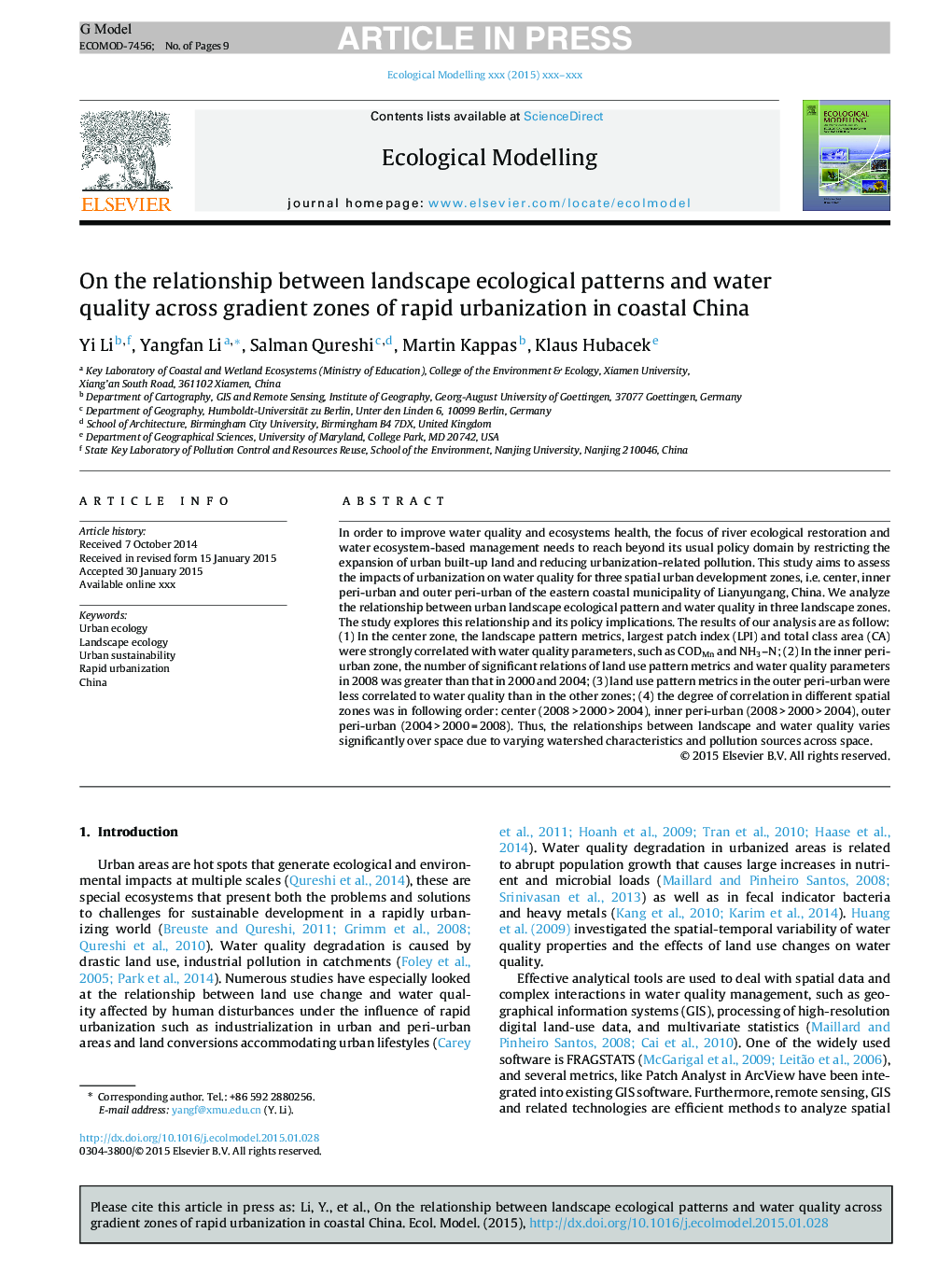| Article ID | Journal | Published Year | Pages | File Type |
|---|---|---|---|---|
| 6296387 | Ecological Modelling | 2015 | 9 Pages |
Abstract
In order to improve water quality and ecosystems health, the focus of river ecological restoration and water ecosystem-based management needs to reach beyond its usual policy domain by restricting the expansion of urban built-up land and reducing urbanization-related pollution. This study aims to assess the impacts of urbanization on water quality for three spatial urban development zones, i.e. center, inner peri-urban and outer peri-urban of the eastern coastal municipality of Lianyungang, China. We analyze the relationship between urban landscape ecological pattern and water quality in three landscape zones. The study explores this relationship and its policy implications. The results of our analysis are as follow: (1) In the center zone, the landscape pattern metrics, largest patch index (LPI) and total class area (CA) were strongly correlated with water quality parameters, such as CODMn and NH3-N; (2) In the inner peri-urban zone, the number of significant relations of land use pattern metrics and water quality parameters in 2008 was greater than that in 2000 and 2004; (3) land use pattern metrics in the outer peri-urban were less correlated to water quality than in the other zones; (4) the degree of correlation in different spatial zones was in following order: center (2008Â >Â 2000Â >Â 2004), inner peri-urban (2008Â >Â 2000Â >Â 2004), outer peri-urban (2004Â >Â 2000Â =Â 2008). Thus, the relationships between landscape and water quality varies significantly over space due to varying watershed characteristics and pollution sources across space.
Related Topics
Life Sciences
Agricultural and Biological Sciences
Ecology, Evolution, Behavior and Systematics
Authors
Yi Li, Yangfan Li, Salman Qureshi, Martin Kappas, Klaus Hubacek,
